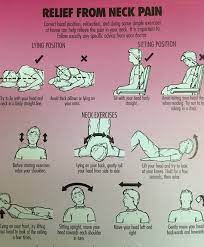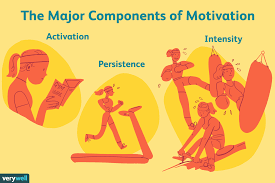The Importance of Physiotherapy Exercises for Recovery and Rehabilitation
Physiotherapy exercises play a crucial role in the recovery and rehabilitation process for individuals dealing with injuries, chronic pain, or mobility issues. These exercises are specifically designed to improve strength, flexibility, balance, and overall function of the body.
Whether you are recovering from a sports injury, surgery, or managing a chronic condition, physiotherapy exercises can help you regain mobility, reduce pain, and enhance your quality of life. Here are some key benefits of incorporating physiotherapy exercises into your treatment plan:
Improved Strength and Flexibility
Physiotherapy exercises target specific muscle groups to improve strength and flexibility. By gradually increasing the intensity and complexity of these exercises, patients can rebuild muscle strength and enhance joint flexibility over time.
Pain Management
Many physiotherapy exercises focus on relieving pain and discomfort associated with injuries or chronic conditions. Through targeted movements and stretches, patients can alleviate muscle tension, reduce inflammation, and improve circulation to promote healing.
Enhanced Balance and Coordination
Balance and coordination are essential for everyday activities such as walking, climbing stairs, or reaching for objects. Physiotherapy exercises that target balance and proprioception can help individuals regain stability and prevent falls.
Faster Recovery Time
Engaging in regular physiotherapy exercises can expedite the recovery process by promoting tissue healing, reducing scar tissue formation, and preventing muscle atrophy. Consistency is key in achieving optimal results.
Personalized Treatment Plans
A qualified physiotherapist will assess your condition and create a personalized treatment plan that includes specific exercises tailored to your needs and goals. These individualized programs ensure that you receive targeted care based on your unique requirements.
In conclusion, physiotherapy exercises are an integral component of rehabilitation programs aimed at restoring function and improving overall well-being. By following a structured exercise regimen under the guidance of a skilled physiotherapist, patients can achieve lasting improvements in their physical health and mobility.
Exploring Physiotherapy Exercises: Types, Common Practices, and Active Techniques
- What are physiotherapy exercises?
- What is the most common physical therapy exercises?
- What are the 4 main types of physical therapy?
- What are the active physiotherapy exercises?
What are physiotherapy exercises?
Physiotherapy exercises are specialized movements and activities prescribed by physiotherapists to help individuals recover from injuries, manage chronic conditions, improve mobility, and enhance overall physical function. These exercises are tailored to each individual’s specific needs and goals, targeting areas of weakness, stiffness, or imbalance. By engaging in physiotherapy exercises regularly, patients can strengthen muscles, increase flexibility, alleviate pain, improve coordination, and regain independence in their daily activities. The guidance and supervision of a qualified physiotherapist ensure that the exercises are performed safely and effectively to support the individual’s rehabilitation journey.
What is the most common physical therapy exercises?
One of the most common physical therapy exercises recommended by physiotherapists is the bridge exercise. The bridge is a versatile and effective movement that targets the core, glutes, and hamstrings while also improving hip stability. To perform a bridge, lie on your back with your knees bent and feet flat on the floor. Engage your core muscles and lift your hips off the ground until your body forms a straight line from shoulders to knees. Hold this position for a few seconds before lowering back down. Bridges are beneficial for strengthening key muscle groups, enhancing posture, and supporting overall functional movement.
What are the 4 main types of physical therapy?
There are four main types of physical therapy that cater to different needs and conditions: orthopedic physical therapy, neurological physical therapy, cardiovascular and pulmonary rehabilitation, and pediatric physical therapy. Orthopedic physical therapy focuses on musculoskeletal injuries and conditions, helping patients recover from fractures, sprains, and joint replacements. Neurological physical therapy addresses disorders of the nervous system such as stroke, spinal cord injuries, or Parkinson’s disease. Cardiovascular and pulmonary rehabilitation assist individuals recovering from heart attacks or lung conditions to improve their endurance and functional abilities. Pediatric physical therapy is tailored to children with developmental delays, genetic disorders, or injuries to promote their motor skills and independence. Each type of physical therapy is specialized to address specific health concerns and optimize patients’ recovery outcomes.
What are the active physiotherapy exercises?
Active physiotherapy exercises are physical movements and activities that require active participation from the individual, as opposed to passive exercises where external forces are used to move the body. These exercises typically involve a range of motion, strength training, balance exercises, and functional movements aimed at improving flexibility, muscle strength, coordination, and overall physical function. Active physiotherapy exercises may include activities such as stretching, resistance training, walking or jogging, balance drills, and specific functional movements tailored to address the individual’s specific needs and goals. By actively engaging in these exercises under the guidance of a physiotherapist, patients can enhance their physical abilities, promote healing, and improve their quality of life.


